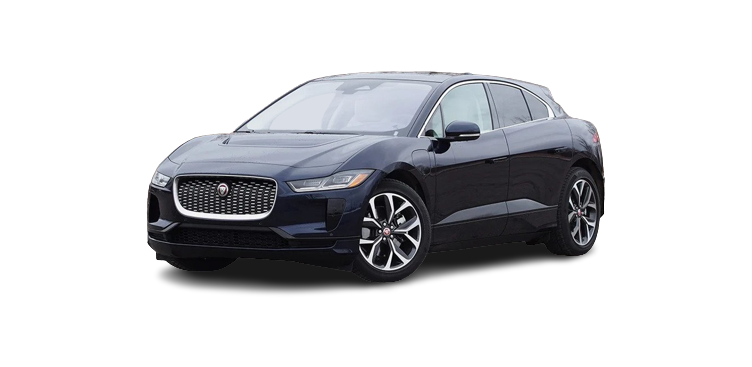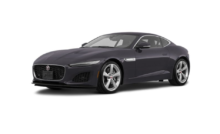2022 Jaguar I-Pace Fluid Level Checks Owners Manual








FLUID FILLER LOCATIONS
Do not drive the vehicle, if leaked fluid could possibly make contact with a hot surface. Any leaked fluid coming into contact with a hot surface could result in combustion. Seek qualified assistance immediately.
Always observe and follow the safety precautions when working in the front storage compartment. Failure to do so may result in serious injury or death.
For more information on safety precautions, see SAFETY WHEN CARRYING OUT VEHICLE CHECKS
A number of simple checks and routine maintenance must be carried out at regular intervals. See WEEKLY CHECKS.
- Washer fluid reservoir filler cap.
- High voltage battery coolant reservoir filler cap.
- Brake fluid reservoir cap.
- Electric motor coolant reservoir filler cap.
CHECKING THE HIGH VOLTAGE BATTERY COOLANT LEVEL
The vehicle should be checked by a retailer/authorized repairer if the coolant level drops below the minimum mark. The high voltage battery coolant level should only be topped up by a trained vehicle technician. Running the vehicle with a low coolant level, or no coolant, causes serious damage.
The high voltage battery coolant level should be checked at least weekly. The level should be checked more frequently in high mileage or arduous operating conditions.
Always check the coolant level when the system is cold and the vehicle’s electrical system is switched off.
To check the high voltage battery coolant level:
- Remove the relevant under-hood covers. See FLUID FILLER LOCATIONS and UNDER-HOOD COVERS REMOVAL.
- Check the high voltage battery coolant reservoir level. Keep the coolant system level at the MAX indicator mark on the expansion tank to achieve the optimum benefit of the high voltage battery cooling system. Make sure the coolant level does not fall below the MIN indicator mark on the expansion tank.
If the coolant level has dropped suddenly, or by a large amount, arrange for the vehicle to be examined by qualified personnel. Consult a retailer/authorized repairer as soon as possible.
CHECKING THE ELECTRIC MOTOR COOLANT LEVEL
Running the electric motor without coolant will cause serious electric motor damage.
If persistent coolant loss is noticed, seek qualified assistance immediately.
Check the electric motor coolant reservoir level at least every week. Check more frequently in high mileage or arduous conditions. Always check the level when the system is cold and the vehicle’s electrical system is switched off.
To check the electric motor coolant level:
- Remove the relevant under-hood covers. See FLUID FILLER LOCATIONS and UNDER-HOOD COVERS REMOVAL.
- Check the electric motor coolant reservoir level. To achieve optimum benefit of the electric motor cooling system, keep the coolant system level at the MAX indicator mark on the expansion tank. Make sure the coolant level does not fall below the MIN indicator mark on the expansion tank.
If the coolant level has dropped suddenly, or by a large amount, arrange for the vehicle to be examined by qualified personnel. Consult a retailer/authorized repairer as soon as possible.
TOPPING UP THE ELECTRIC MOTOR COOLANT
Never remove the coolant reservoir filler cap when the electric motor cooling system is hot. Escaping steam or scalding water could cause serious personal injury.
Unscrew the filler cap slowly, allowing the pressure to escape before removing completely.
Antifreeze is highly flammable. Do not allow antifreeze to come into contact with open flames or other sources of ignition. A fire may result.
Antifreeze is poisonous and can be fatal if swallowed. Keep containers sealed and out of the reach of children. If accidental consumption is suspected, seek medical attention immediately.
If the fluid comes into contact with the skin or eyes, rinse immediately with plenty of water.
When traveling in territories where the water supply contains salt, always make sure to carry a supply of fresh (rain or distilled) water. Topping up with salt water causes serious electric motor damage.
The use of non-approved antifreeze has an adverse effect on the electric motor’s cooling system and, therefore, electric motor durability. See LUBRICANTS AND FLUIDS.
Antifreeze damages painted surfaces. Soak up any spillage with an absorbent cloth immediately. Wash the area with a mixture of car shampoo and water.
Do not use any anti-leak products in the cooling system, as it causes damage to the vehicle.
Antifreeze contains important corrosion inhibitors. The antifreeze content of the coolant must be maintained at 50% to 60% all year round, not just in cold conditions. To make sure the anti-corrosion properties of the coolant are maintained, the antifreeze content should be checked once a year. Regardless of the distance traveled, the antifreeze should be replaced every 10 years. Failure to do so may cause corrosion of the radiator and electric motor components. The specific gravity of a 50% antifreeze solution at 68°F (20°C) is 1.068 and protects against frost down to -40°F (-40°C).
To top up the electric motor coolant:
- Rotate the electric motor coolant reservoir filler cap counter-clockwise and remove.
- Top up to the MAX indicator mark on the side of the coolant reservoir. Use a mixture of 50% water and 50% antifreeze. See LUBRICANTS AND FLUIDS. NOTES
In an emergency, and only if the approved antifreeze is unavailable, top up the cooling system with clean water. Be aware of the resultant reduction in frost protection. Do not top up or refill with conventional antifreeze formulations. If in doubt, consult a qualified technician. - To refit the coolant reservoir filler cap, rotate the filler cap clockwise until a resistance if felt.
- Refit the under-hood cover. See UNDER-HOOD COVERS REFITTING.
CHECKING THE BRAKE FLUID LEVEL
Seek qualified assistance immediately if brake pedal travel is unusually long, or if there is any significant loss of brake fluid. Driving under such conditions could result in extended stopping distances or complete brake failure.
Brake fluid is highly toxic. Keep containers sealed and out of the reach of children. If accidental consumption of fluid is suspected, seek medical attention immediately.
If the fluid comes into contact with the skin or eyes, rinse immediately with plenty of water.
Brake fluid is highly flammable. Do not allow brake fluid to come into contact with open flames or other sources of ignition. A fire may result.
Do not drive the vehicle with the fluid level below the MIN mark.
If the quantity of fluid in the brake reservoir drops below the recommended level, a red warning lamp in the instrument panel illuminates. See BRAKE (RED).
If the warning lamp illuminates while the vehicle is being driven, gently apply the brakes to stop the vehicle, as soon as safety permits. Check and top up the fluid level, if necessary.
With the vehicle on level ground, check the fluid level at least every week. Check more frequently in high mileage or arduous operating conditions.
To check the brake fluid level:
- Remove the relevant under-hood covers. See FLUID FILLER LOCATIONS and UNDER-HOOD COVERS REMOVAL.
- Check the brake fluid reservoir level. The level should be between the MIN and the MAX marks. NOTES
The fluid level may drop slightly during normal use, as a result of brake pad wear. The fluid level should not be allowed to drop below the MIN mark.
TOPPING UP THE BRAKE FLUID
Always use brake fluid which has the correct specification. See LUBRICANTS AND FLUIDS.
Brake fluid damages painted surfaces. Soak up any spillage with an absorbent cloth immediately. Wash the area with a mixture of car shampoo and water.
Only use new fluid from an airtight container. Fluid from open containers, or fluid previously bled from the system, will have absorbed moisture. Contaminated fluid will adversely affect performance, and must not be used.
Do not top up the brake fluid to the maximum mark unless the brake pads have been replaced. If unsure, seek qualified assistance.
To top up the brake fluid:
- Clean the brake fluid reservoir and the filler cap before removing, to prevent dirt from entering the reservoir.
- Rotate the reservoir filler cap counter-clockwise and remove.
- Top up the reservoir to at least the minimum mark.
- To refit the reservoir filler cap, rotate the cap clockwise.
- Refit the under-hood cover. See UNDER-HOOD COVERS REFITTING.
CHECKING THE WASHER FLUID LEVEL
Some windshield washer products are flammable, particularly if high or undiluted concentrations are exposed to sparking. Do not allow the windshield washer fluid to come into contact with exposed flames or sources of ignition, as this can cause a fire or explosion.
If the vehicle is operated in temperatures below 40°F (4°C), use a windshield washer fluid with frost protection. In cold weather, failure to use a windshield washer fluid with frost protection could result in impaired vision and increase the risk of a vehicle crash.
Do not use an antifreeze or a vinegar and water solution in the washer reservoir. Antifreeze damages painted surfaces, while vinegar can damage the windshield washer pump.
Body panels may suffer discoloration as a result of windshield washer fluid spillage. Take care to avoid spillage, particularly if an undiluted or high concentration is being used. If spillage occurs, wash the affected area immediately with water.
Only use approved windshield washer fluid. See LUBRICANTS AND FLUIDS.
The washer fluid reservoir supplies both the front windshield and the headlight washer jets.
Check and top up the reservoir level at least every week. Always top up with windshield washer fluid to prevent freezing.
Operate the washer controls periodically, to check that the nozzles are clear and properly directed.
TOPPING UP THE WASHER FLUID
National or local regulations may restrict the use of Volatile Organic Compounds (VOCs) which are commonly used as antifreeze agents in windshield washer fluid. A windshield washer fluid with limited VOC content should be used only if it provides adequate freeze resistance for all climates in which the vehicle is operated.
- Clean the washer fluid reservoir filler cap before removing, to prevent dirt from entering the reservoir.
- Remove the filler cap.
- Top up the reservoir until the fluid is visible in the filler neck.
- Replace the filler cap.
Recent Posts
VW Jetta Engine Fuse Box Diagram
Access the comprehensive 2010-2018 VW Jetta Passenger Fuse Box Diagram to troubleshoot electrical issues effectively.…
VW Jetta Passenger Fuse Box Diagram
Explore the comprehensive VW Jetta Passenger Fuse Box Diagram to troubleshoot electrical issues effectively. Understand…
2023 Ford F-150 Lightning Fuse Box Diagram
Under Hood Fuse Box Location Remove the front luggage compartment cover. Under Hood Fuse Box…
2022 Kawasaki NINJA H2 SX SE Brake Lever Adjuster Owner’s Manual
2022 Kawasaki NINJA H2 SX SE Brake Lever Adjuster Owner's Manual NOTICE Only adjust the front…
2023 Land Rover Range Rover Evoque Exiting The Vehicle Owners Manual
2023 Land Rover Range Rover Evoque Exiting The Vehicle SINGLE LOCKING WARNING Before exiting the…
2023 Land Rover Range Rover Evoque Front Seats Owners Manual
2023 Land Rover Range Rover Evoque Front Seats FRONT SEAT SAFETY Make sure to read…
